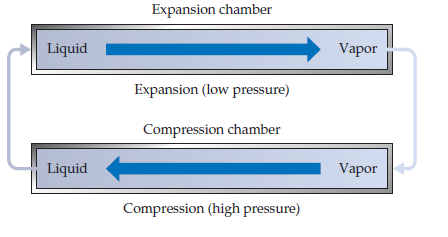Thermochemistry
Thermochemistry can be considered as a branch of thermodynamics that deals with the connections between warmth, work, and various types of energy, formed because of different synthetic and actual cycles. Thermochemistry describes the energy changes that occur as a result of reactions or chemical changes in a substance.
Exergonic Reaction
The term exergonic is derived from the Greek word in which ‘ergon’ means work and exergonic means ‘work outside’. Exergonic reactions releases work energy. Exergonic reactions are different from exothermic reactions, the one that releases only heat energy during the course of the reaction. So, exothermic reaction is one type of exergonic reaction. Exergonic reaction releases work energy in different forms like heat, light or sound. For example, a glow stick releases light making that an exergonic reaction and not an exothermic reaction since no heat is released. Even endothermic reactions at very high temperature are exergonic.
A standard air conditioner involves a refrigerant that is typically
now a fluorinated hydrocarbon, such as CH2F2. An
air-conditioner refrigerant has the property that it readily
vaporizes at atmospheric pressure and is easily compressed
to its liquid phase under increased pressure. The operation
of an air conditioner can be thought of as a closed
system made up of the refrigerant going through the two
stages shown here (the air circulation is not shown in this
diagram).
During expansion, the liquid refrigerant is released into an
expansion chamber at low pressure, where it vaporizes. The
vapor then undergoes compression at high pressure back
to its liquid phase in a compression chamber. (a) What
is the sign of q for the expansion? (b) What is the sign of
q for the compression? (c) In a central air-conditioning
system, one chamber is inside the home and the other is
outside. Which chamber is where, and why? (d) Imagine
that a sample of liquid refrigerant undergoes expansion
followed by compression, so that it is back to its original
state. Would you expect that to be a reversible process?
(e) Suppose that a house and its exterior are both initially
at 31 °C. Some time after the air conditioner is turned on,
the house is cooled to 24 °C. Is this process spontaneous or
nonspontaneous?

Trending now
This is a popular solution!
Step by step
Solved in 3 steps


